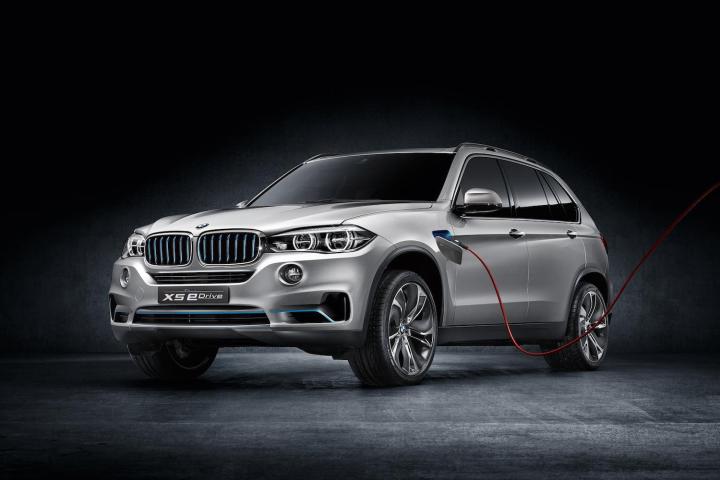
Most major car makers offer a range of hybrids, except Chrysler. But it has diesel obsessed FIAT to answer to. In order to comply with California legislation, however, Chrysler does offer a single EV.
BMW has slightly more ambitious plans; it wants to offer a plug-in hybrid version of every car in its lineup. Except of course for the i3 and i8, which are already fully electric.
The first step towards this ambitious goal is the X5 PHEV concept: a plug-in version of BMW’s second least exciting car.
The Bavarians say that the plug-in will be able to do 30 kilometers on the initial charge – that’s about 18.6 miles for those of us from the colonies – and achieve speeds of about 120 kph, or 75 mph, on its batteries alone.
This is achieved by paring a small turbocharged four-banger to an electric motor charged with 70 kW of electrons. This power is run to all four wheels and is good for 0-60 mph in “less than seven seconds.” My guess is that means 6.9 seconds. But who knows? 2.6 seconds is also less than seven seconds. Even with these performance figures, the car is rated at 62 mpg, at least under European testing standards.
So why isn’t this on sale yet? Its because batteries continue to suck. The lithium ion battery packs used by most hybrids and just about every EV are expensive and difficult to configure. This is doubly true of plug-in hybrids that have to be able to stand up to huge numbers of charging cycles. So even though head of BMW large car production, Peter Wolf, says the rest of the car is “close to” production; we will have to wait until BMW gets its battery issues sorted before we see a production car.
BMW’s all electric goal is impressive, but it will be interesting to see if these kind of delays with battery optimization continue to be a problem. However, if anyone can figure it out and make a tidy profit it’s going to be the folks who modestly claim to make Ultimate Driving machines.


